- Introduction
- Risks associated with overdose
- Sources of overdose
- Causes of overdose
- Risk factors for overdose
- Statistics on overdose
- Pharmaceuticals (prescription, over the counter and illicit)
- Hospitalisation for unintentional pharmaceutical overdose
- Hospitalisation for intentional pharmaceutical overdose
- Hospitalisation for pharmaceutical overdose of undetermined intent
- Poisons Information Centre queries for pharmaceutical overdose
- Herbal and natural remedies
- Alcohol
- Counterfeit drugs
- Preventing an overdose
- Recognising the symptoms of an overdose
- Managing an overdose
- Follow up care
Introduction
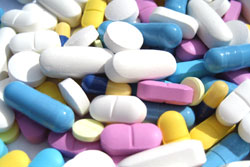
Drug overdoses can be life-threatening or cause serious injury such as brain damage. However overdoses can be prevented by avoiding illicit substances and only taking the correct dose of legal drugs. Medicines purchased from a pharmacy are the most common source of drug overdose requiring hospitalisation, yet individuals who misuse prescribed drugs may not perceive they are at risk of overdose because their drugs are legally available and prescribed by their doctor.
Health practitioners, including doctors and pharmacists therefore need to educate their clients about medicine drug use, particularly individuals who are at risk of overdosing (e.g. a person who has previously overdosed). For example, when you visit your doctor or pharmacist for medicines they may provide you with information about the correct way to take their medicine, such as the importance of taking it according to the doctor’s instructions. They may also provide advice about drug interactions which occur when two drugs are used at the same time (e.g. you drink alcohol whilst taking a prescription medicine), the importance of not giving prescription medicines to someone they were not prescribed for and approaches to treating your health problem which do not involve taking medicines.
Risks associated with overdose
The risks of overdose vary, depending on the type of substance consumed, the amount taken and characteristics of your body. The risks range from mild and temporary distress to hospitalisation and death. Most unintentional overdoses do not cause long term damage if the person receives prompt medical treatment. However overdose from legal and illegal drugs can cause long term damage to the liver and/or kidneys and can result in death.
Sources of overdose
While overdose is commonly associated with illegal drug use, illegal drugs account for only a small proportion of overdose cases admitted to hospital inAustraliaeach year. The majority of people hospitalised because of overdose have taken too much of a legally available medicine. It is important to understand that you can overdose after taking too much of any type of medicine or drug, including:
- Prescription only medicines;
- Over the counter medicines;
- Herbal and other natural remedies;
- Alcohol;
- Illegal recreational drugs;
- Illegal counterfeit medicines.
Causes of overdose
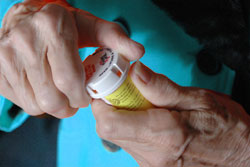
Illegal drugs (including counterfeits) and natural remedies are often manufactured in unregulated environments, meaning that the type, quality or quantity of active ingredients is unknown and the safety and efficacy of the products have not been tested. There is also potential for accidental overdose from these drugs.
A drug overdose may also be intentional, when the person takes too much of a legal or illegal drug to experience its intoxicating effects, or to cause harm (e.g. someone who commits suicide).
Risk factors for overdose
Some individuals have a higher risk of experiencing overdose than others. They include individuals who:
- Inject heroin: individuals who inject heroin are 14 times more likely to overdose than individuals who use other drugs;
- Have recently experienced a non-fatal overdose;
- Have a long history of injection drug use;
- Have high drug use;
- Reach high levels of intoxication;
- Experience depression and other psychological problems, including feeling suicidal;
- Use opiates in combination with other depressants such as alcohol;
- Have low tolerance for opiates: for example individuals who have completed detoxification or have been imprisoned;
- Share injecting equipment;
- Have prematurely withdraw from a methadone treatment program or have not attempted a methadone treatment program;
- Use heroin and cocaine in combination.
Statistics on overdose
Although injecting drug users and users of illicit drugs have the highest risk of overdose as a group,only a minority of overdoses cases in Australiainvolve illicit drugs. In the 2005–06 financial year 28,612 patients were admitted to Australian hospitals due to overdose/poisoning with drugs, medicines or other biologically active substances. These included cases of intentional and unintentional poisoning. These admissions comprised 7.7% of all hospital admissions. A greater proportion of female hospital admissions (11.6%) were due to drug poisoning compared to male hospital admissions (4.9%). A further 3,568 were admitted due to overdose/poisoning of undetermined intent.
Pharmaceuticals (prescription, over the counter and illicit)
Hospitalisation for unintentional pharmaceutical overdose

Children
One-fifth of all cases of unintentional pharmaceutical poisoning occurred in children aged 0–4 and a further 3% occurred in children aged 5–14. Male children were more likely to be admitted to hospital for pharmaceutical poisoning than female children.
Pharmaceuticals are the most common source of hospitalisation for poisoning amongst children. Over half (63%) of the 4,700 children hospitalised annually are hospitalised due to pharmaceutical poisoning.
Drug overdose or poisoning from pharmaceuticals is more common in all age groups than poisoning from all other substances (e.g. household chemicals). While the risk of poisoning remained low from age 5–12, risk increases after the child’s 12th birthday. Male children had a slightly higher risk of poisoning requiring hospitalisation compared to female children (241 males are admitted per 100,000 population compared to 208 per 100,000 for females).
Adults and adolescents ≥15 years
The majority (76% or 4,821 cases) of unintentional pharmaceutical poisoning cases admitted to Australian hospitals involved adults and adolescents (≥15years). In this age group females were more likely to be admitted than males.
Types of pharmaceuticals
The classes of drugs most commonly involved in cases of accidental pharmaceutical overdose were:
- Medicines used to treat epilepsy or Parkinson’s disease, sedative and hypnotic medicines, and psychotropic drugs (those that stimulate the central nervous system) (42%, 2,674 cases), including:
- Benzodiazepines, also known as tranquilisers (17%, 1,053 cases);
- Antidepressants (6%, 363 cases);
- Antipsychotics and neuroleptics (used to treat psychotic disorders such as schizophrenia– (4%, 265 cases); and
- Psychostimulants (drugs which stimulate the nervous system) with potential for misuse (4%, 243 cases)
- Other medicines and substance (25%, 1,582 cases), including agents primarily affecting the cardiovascular system, the body as a whole, the blood, and the gastrointestinal system;
- Pain killers (16%, 1,048 cases) including:
- Such as paracetamol (12%, 760 cases);
- Other non-steroidal anti-inflammatory drugs (3%, 204 cases).
- Narcotics, hallucinogens and other unclassified drugs, including:
- Heroin (2%, 127 cases);
- Other opioids such as codeine and morphine (4%, 261 cases);
- Unspecified hallucinogens (2%, 126 cases).
- Other drugs acting on the autonomic nervous system (the section of the nervous system which regulates movement of involuntary muscles such as the heart) (4%, 228 cases).
Hospitalisation for intentional pharmaceutical overdose
In 2005–06, 23,778 patients were admitted to Australian hospitals because of intentional self-harm and of these cases, 77% (18,385) involved intentional self-poisoning with pharmaceutical agents. Of these 12,221 cases were female and 6,164 cases were male. Age data were not reported.
Types of pharmaceuticals

- Medicines used to treat epilepsy or Parkinson’s disease, sedative and hypnotic medicines, and psychotropic drugs (46%, 10,843 cases), including:
- Benzodiazepines, also known as tranquilisers;
- Antidepressants;
- Antipsychotics and neuroleptics (used to treat psychotic disorders such as schizophrenia); and
- Psychostimulants (drugs which stimulate the central nervous system) with potential for use disorder
- Pain killers (19%, 4,617 cases) including:
- Medicines such as paracetamol;
- Other non-steroidal anti-inflammatory drugs;
- Narcotics and hallucinogens (5%, 1,175 cases);
- Other and unspecified drugs (6%, 1,515 cases);
- Other drugs acting on the autonomic nervous system (1%, 235 cases).
Hospitalisation for pharmaceutical overdose of undetermined intent
Of the 4,430 people admitted to Australian hospitals with injuries of undetermined intent, the majority (76%, 3,375 cases) were cases of pharmaceutical poisoning. Women were more likely than men to be hospitalised for this diagnosis, however age data were not reported.
Types of pharmaceuticals
The classes of drugs most commonly involved in cases of pharmaceutical poisoning of undetermined intent were:
- Medicines used to treat epilepsy or Parkinson’s disease, sedative and hypnotic medicines, and psychotropic drugs (40%, 1,752 cases);
- Pain killers (13%, 591 cases);
- Narcotics and hallucinogens, not elsewhere classified (11% 497 cases);
- Other and unspecified drugs (11%, 479 cases);
- Other drugs acting on the autonomic nervous system (1%, 56 cases).
Poisons Information Centre queries for pharmaceutical overdose
The Poisons Information Centres in each state handle queries about potential poisoning and their call logs provide insights into the types of drugs people most commonly enquire about and the reasons for their enquiries. In Queenslandin 2008, 83% of all calls involved queries about unintentional exposure to drugs or other poisons. Of all calls the centre received, 44% were enquiries about poisoning from drugs or other toxic substances such as cleaning products, while 14% (>4,000) were potential cases of overdose, referred for immediate medical attention. The majority of enquiries were made on behalf of children (56%).
Queries about pharmaceuticals were the reason for 38% (15,402) of calls to the Poisons Information Hotline in Queenslandin 2008. Of the medicines consumers enquired about, two medicines available over the counter, ibuprofen (732) and paracetamol (1,758) were the most common.
Paracetamol has been the most common source of enquiry to the Poisons Information Centre for several years. It is the most commonly used over the counter medicine, a medicine that children are often exposed to. While fatal outcomes are rare for paracetamol exposure, liver damage and death can occur. Paracetamol is the most common cause of liver failure in developed countries. InAustraliahospitalisation due to paracetamol overdose is more common than hospitalisation for any other type of drug overdose.
Herbal and natural remedies
Herbal and natural remedies account for a small number of poisonings amongst children and the main sources of poisoning are supplements such as iron and vitamin tablets. Data collected by hospitals about poisoning do not list herbal or natural products as a separate category.
Alcohol
Hospitalisation for unintentional overdose
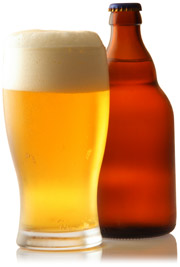
Hospitalisation for intentional alcohol overdose
In 2005–06, 282 Australians were admitted to hospital for intentional alcohol poisoning. Of these cases, 144 involved males and 138 involved females. Data regarding the age distribution of intentional alcohol poisoning cases were not reported.
Hospitalisation for alcohol overdose of undetermined intent
A further 193 cases of alcohol overdose of undetermined intent were admitted to Australian hospitals in 2005–06.
Counterfeit drugs
In Australia counterfeit drugs are a relatively small problem, however there was one case of hospitalisation recorded in 2010, after a man ingested counterfeit erectile dysfunction medication containing anti-diabetes drugs.
Preventing an overdose
Prescription and over-the-counter medicines
To prevent an overdose using a prescription or over the counter medicine, always take the dose prescribed by the doctor or, in the case of over the counter medicines, the dose recommended on the Consumer Medical Information (CMI) leaflet which comes with the medicine. Never take more than the recommended dose. Take some time to discuss the correct way of taking the medicines with your doctor or pharmacist, to ensure you understand how and when to take the medicine correctly.
The CMI also contains information about potential drug interactions. Some drugs should not be taken together. If you are taking any medicines listed in the drug interactions section of the CMI, you should not take the new medicine. Talk to your doctor or pharmacist about alternative medicines which are safe for you to use. Note that alcohol is a drug that interacts with many medicines and it is often not safe to consume alcohol whilst using a medication.
Some of the information on the CMI relates to specific groups of individuals, for example children or elderly people or people with health conditions such as liver, kidney or heart problems. In particular special groups often need to take a different dose of the medicine. Always tell your doctor if you have another health problem so they can consider this when deciding which medicine and which dose is most appropriate for you. For over the counter medicines, read the CMI carefully and ensure you follow the instructions appropriate for you. For example if you have a liver problem, use the dose advise which relates to individuals with liver problems.
Prescription-only medicines should only be taken by the person the doctor prescribed them for. Never share prescription medicine with friends, family or another person, even if that person has the same condition as you do. All medicine should be stored in a secure place, out of reach of children and kept in their original packaging. The CMI leaflet, which contains information about how much medicine to take, should also be kept in a safe place or with the medicine. It is also important to check the label each time you take the medicine. Do not take medicines in the dark when the label cannot be read.
If you live with children, the following recommendations can be made to help prevent them from being unintentionally exposed to medicines:
- Make sure children are closely supervised at home. This is particularly important when other people’s children are visiting as you may not be familiar with the visiting child’s habits and capabilities;
- Ask the pharmacist to dispense medicines in child proof containers;
- Keep medicines out of sight and reach of children, at least 1.5 metres off the ground:
- If medicines need to be refrigerated keep them at the back of the fridge (not in the door) in a lockable container;
- Ask visitors to put any medicines in their bags out of reach of children;
- Return medicines to their safe storage area immediately after use;
- Fit cupboards used to store medicine with child resistant containers;
- Returned unused medicines to the pharmacist;
- Don’t take medicines in front of children, as children like to imitate what other people do, including taking medicines;
- Don’t call medicines lollies;
- Do not move medicines to an easier to open container if you find it difficult to open the container they were dispensed with;
- Be aware that poisoning often occurs during periods of disruption from normal routine, for example during holidays with grandparents who take medicine but do not usually childproof their medicine or when a member of the family is ill and needs to take medicine.
Alcohol
In large quantities, alcohol can cause toxicity. To avoid all health risks associated with alcohol, the National Health and Medical Research Council of Australia recommends that healthy men and women should drink no more than two standard drinks on any day.
Alcohol poisoning typically occurs after consuming large quantities of alcohol, for example during binge drinking. However the exact amount of alcohol needed to cause alcohol poisoning differs due to individual characteristics and is difficult to predict. Avoiding binge drinking altogether is the best prevention strategy.
To prevent your children accidentally or intentionally consuming alcohol which may cause poisoning, keep alcohol out of reach and sight of children. Ideally it should be stored in a child proof cabinet.
 |
For more information about alcohol and intoxication, see Alcohol: How to Help a Drunk Person. |
Illicit drugs
Illegal drugs should be completely avoided.
Herbal or natural remedies
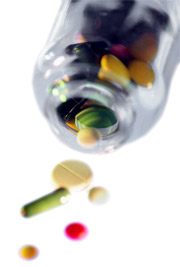
Like medicines, natural remedies may interact with other medicines you are taking, however because the composition of natural remedies is often unknown, predicting drug interactions which may cause an overdose can be difficult. If you use herbal or natural remedies, treat them like other medicines and consult your doctor about the potential for overdose and other safety issues before use.
It is also important to be aware that products which claim to be herbal or natural remedies have been found in some cases to contain pharmacologically active substances. For example natural remedies for erectile dysfunction have been found to contain phosphodiesterase 5 (PDE5) inhibitors, the main class of drug used to treat this condition. PDE5 inhibitors are contraindicated in men taking some medications for conditions which are common in men with erectile dysfunction (e.g. nitrates used to treat a heart condition called angina pectoris). These men may seek natural remedies as an alternative to PDE5 inhibitors. However if the natural remedies contain the active ingredient they are trying to avoid, the risk of overdose due to drug-drug interaction is serious.
Counterfeit medicines
Like natural remedies, the manufacture of illegal drugs is unregulated and the active ingredients contained and their concentrations are unknown. There is significant potential for drug-drug interactions when active ingredients are unlisted. Assessing the nature of such interactions is complicated, as the drug causing the interaction must be identified. There is also potential risk of overdose if an active ingredient is included in the counterfeit medicine in too high a dose. To avoid counterfeit medicines which may contain the wrong active ingredient or the wrong dose, purchase all medicines from a pharmacy and be cautious about purchasing medicines online, as many online medicines are fake.
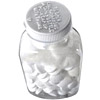 |
For more information, see Counterfeit Drugs. |
There are numerous cases of individuals overdosing after taking counterfeit drugs which contained unlisted ingredients in quantities toxic to the healthy body. For example men in Singapore and Australia were hospitalised and/or died after taking counterfeit medicine to treat erectile dysfunction which contained toxic doses of a medicine usually used to treat diabetics.
 |
For more information, see Counterfieit Drugs for Erectile Dysfunction. |
Recognising the symptoms of an overdose
Drug overdose emergencies can be difficult to recognise and symptoms may differ depending on the type of drug involved. If you suspect someone has overdosed on drugs, contact emergency medical services immediately. Prompt medical attention may save the person’s life.Common symptoms if drug overdose include:
- Coma;
- Convulsions or seizures;
- Difficulty breathing;
- Drowsiness;
- Nausea and vomiting;
- High or low blood pressure;
- Confusion;
- Organ damage (especially liver or kidney damage) or failure;
- Liver damage may present with the following symptoms:
- Jaundice;
- Nausea and vomiting;
- Loss of appetite;
- Darker urine;
- Pale stools;
- Lower right abdominal pain;
- Kidney failure may present with the following symptoms:
- Reduced urine output;
- Swollen feet;
- Swollen lower legs;
- Liver damage may present with the following symptoms:
- Heart failure.
Overdoses with different types of drugs, typically produce different types of symptoms, for example:
- Opioids such as heroin and morphine typically cause a decreased breathing rate which can lead to death, usually 1–3 hours after the drugs were taken;
- Stimulants such as cocaine typically cause increased pulse rate and blood pressure. Individuals who overdose may go into a coma or experience a heart attack or seizure;
- Depressants including alcohol, barbiturates and sedatives can cause weak pulse, shallow breathing, dilated pupils and coma;
- Hallucinogenic or mind altering drugs such as marijuana may cause paranoia, hallucinations, fatigue and psychosis;
- Alcohol typically causes mental confusion or coma, vomiting, slow or irregular breathing and hypothermia.
Managing an overdose
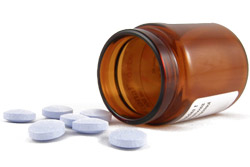
If a person has taken an overdose and experiences symptoms of an overdose, it may be a medical emergency, requiring prompt treatment. If a person falls asleep and cannot be woken up after taking drugs, they may also have overdosed. In these cases, you should contact Emergency Services on 000. If the person is violent, the police should also be contacted. If the ambulance is called and turns out not to be needed the person who has overdosed will not need to pay anything.
What to do in an emergency
It is important to know what to do if a person overdoses, in case one day you are the carer for an individual who has overdosed and become unconscious or started displaying other serious symptoms of overdose. This is a medical emergency and the first response should be to contact Emergency Services on 000, to arrange for an ambulance. If the person has taken too much medicine but is not experiencing symptoms, contact the Poisons Information Centre instead.
Only once emergency services have been contacted should you begin checking the airways and heartbeat of the person who has overdosed. You should:
- Check the person’s airway. If the person has an airway obstruction (something blocking their windpipe) you should try to remove any obstructions from the person’s mouth. You should extend the person’s neck before you try to remove the object which is blocking their airway;
- Check the person’s breathing, once the airway had been cleared. If the person is not breathing, start mouth-to-mouth resuscitation immediately;
- Check for the person’s pulse in the neck. If there is no pulse, start cardiopulmonary resuscitation (CPR, or heart massage) immediately;
- If the person’s breathing and pulse are okay, place the person on their side in the recovery position;
- Loosen tight clothing which may impair breathing;
- Keep the person comfortably warm;
- Stay with the person until the ambulance arrives;
- Give as much information as possible to the ambulance personnel, including what happened to the person, what you did to assist them and what type/s of drug/s the person has taken. If possible, give the ambulance personnel the leftover drugs or drug container.
What not to do in an emergency
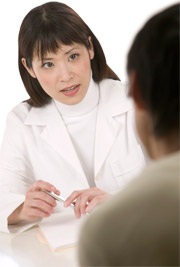
- Do not try and make the person vomit;
- Do not put the person in a bath as they may drown;
- Do not inject the person with salty water or stimulant drugs;
- Do not give them any fluid including alcohol, tea, coffee or water;
- Do not leave them alone;
- Do not assume they will get over the overdose without medical assistance;
- Do not give them CPR if they have a pulse;
- Do not put yourself at risk. If the person is violent contact the police.
Diagnosing an overdose
There are numerous tests which may be conducted in a hospital emergency department to diagnose whether or not a person has overdosed and which medication has caused the overdose. These tests include:
- Blood test;
- Electrocardiogram (ECG) to show heart rhythms;
- Observation and monitoring the person’s vital signs (e.g. pulse rate, breathing, blood pressure).
Treating an overdose
There are also numerous ways to treat an overdose and the correct approach depends on the type of drug taken. Treatment often involves:
- Administration of intravenous fluids or medicine to adjust blood pressure;
- Administration of activated charcoal to prevent further absorption of the drug by the person’s body;
- An antidote to reverse the toxic effects of the drug.
Individuals who have overdosed may be admitted to hospital for further or observation. Hospital statistics indicate that most young children (< 5) are admitted for observation as a precautionary measure, with only 7% requiring further medical interventions.
Follow up care
Following emergency treatment for an overdose, most patients require follow-up medical attention, to assess the kidneys and liver for permanent damage. Such care can usually be provided by the person’s general practitioner. However patients with a poor prognosis or signs of liver damage will probably be referred to a specialist liver centre for assessment.
Follow-up care is particularly important if the individual being treated intentionally took a drug overdose. In these cases the overdose may have been a suicide attempt, a cry for help or evidence of an underlying psychological disorder.
References
- Nielson S, Prevention of Pharmaceutical Drug Misuse. Prevention Research Quarterly. 2008: 7: 1-13 [Full Text]
- Kriesfeld R, Harrison JE. Hospital separations due to injury and poisoning- 2005-6. Australian Institute of Health and Welfare. 2010. [cited 2011, Jan 20] [URL Link]
- United States Government. Facts about alcohol poisoning. 2008. [cited 2011, January 17]. [URL Link]
- Department of Health- New York State. NYOSAS/NYSDOH Health Advisory: Interventions to Prevent Opioid Overdose. 2009. [cited 1 June 2011] Available from: [URL Link]
- Cripps R, Steel D, Childhood Poisoning in Australia. NISU Briefing. 2006; 5. [cited 2011, Jan 19] [URL Link]
- Victoria Health. Drug Overdose- Emergency Department Fact Sheet. 2008. [cited 2011, Jan 17] [URL Link]
- Pharmaceutical Society of Australia. Drug Overdose. 2010 [cited 2011, Jan 12]. [URL Link]
- Jackson G, Arver S, Banks I, Stecher VJ. Counterfeit phosphodiesterase type 5 inhibitors pose significant safety risks. Int J Clin Prac. 2010; 64(4): 497-504. [Full Text]
- Queensland Poisons Information Centre. Annual Report-2008. 2009. [cited 2011, Jan 17]. [URL Link]
- Daly FFS, Fountain JS, Murray L, et al. Guidelines for the management of paracetamol poisoning in Australia- explanation and elaboration. Med J Aust. 2008. 188:296-301. [Full Text]
- Commonwealth Research Institute of Australia. Using Consumer Medical Information- A guide for consumers and health professionals. 2000. [cited 2011, January 17]. [URL Link].
- Queensland Health. Poisoning Prevention. 2009. [cited 2011, Jan 18] [URL Link]
- Children’s Hospital Westmead Poison’s Information Centre. Kid’s and Poisons Fact Sheet. 2010. [cited 2011, Jan 19]. [URL Link]
- Children’s Hospital Westmead Poison’s Information Centre. Poisoning. 2008. [cited 2011, Jan 19]. [URL Link]
- Children Youth and Women’s Health Service. Poisoning. 2010. [cited 2011, Jan 18] [URL Link]
- Australian Guidelines to Reduce Health Risks From Drinking Alcohol [online]. National Health and Medical Research Council; 2009. [cited 2 October 2010]. Available from: URL Link [http://www.nhmrc.gov.au/_files_nhmrc/file/publications/synopses/ds10-alcohol.pdf]
- Children’s Hospital Westmead Poison’s Information Centre. Home Safety Checklist. 2003. [cited 2011, Jan 19]. [URL Link]
- American College of Obstetricians and Gynaecologists. Herbal products for menopause. 2003. [cited 2010, July 28]. [URL Link]
- United States Food and Drug Administration. Hidden risks of Erectile Dysfunction “treatments” sold online. 2009. [cited 2010, October 20]. [URL Link].
- GPHF. Counterfeit Medicines- An unscrupulous business. 2004 [cited 2011, Jan 17] [URL Link].
- Penthrox Product Information. Springvale, VIC: Medical Developments International Pty Ltd; 9 February 2010.
- National Health Service- National Agency for Substance Misuse. Reducing Drug Related Deaths- Guidance for Drug Treatment Providers. 2004. [cited 1 June 2011] Available from: [URL Link]
- University of Maryland Medical Centre. Drug Abuse First Aid. [cited 1 June 2011] [URL Link]
- Chaubey SK, Sangla KS, Suthaharan EN, Tan YM, Severe hypoglycaemia associated with ingesting counterfeit medicine. Med J Aust. 2010; 192(12): 716-7. [Abstract].
- American Institute for Preventative Medicine- Georgetown University. Playing it Safe- Drugs and Drug Safety. 2006. [cited June 1, 2011] [URL Link]
All content and media on the HealthEngine Blog is created and published online for informational purposes only. It is not intended to be a substitute for professional medical advice and should not be relied on as health or personal advice. Always seek the guidance of your doctor or other qualified health professional with any questions you may have regarding your health or a medical condition. Never disregard the advice of a medical professional, or delay in seeking it because of something you have read on this Website. If you think you may have a medical emergency, call your doctor, go to the nearest hospital emergency department, or call the emergency services immediately.







